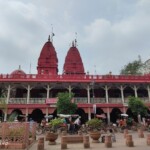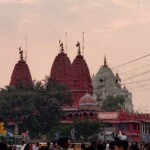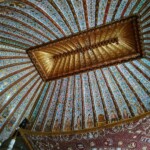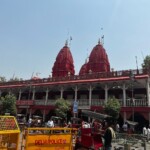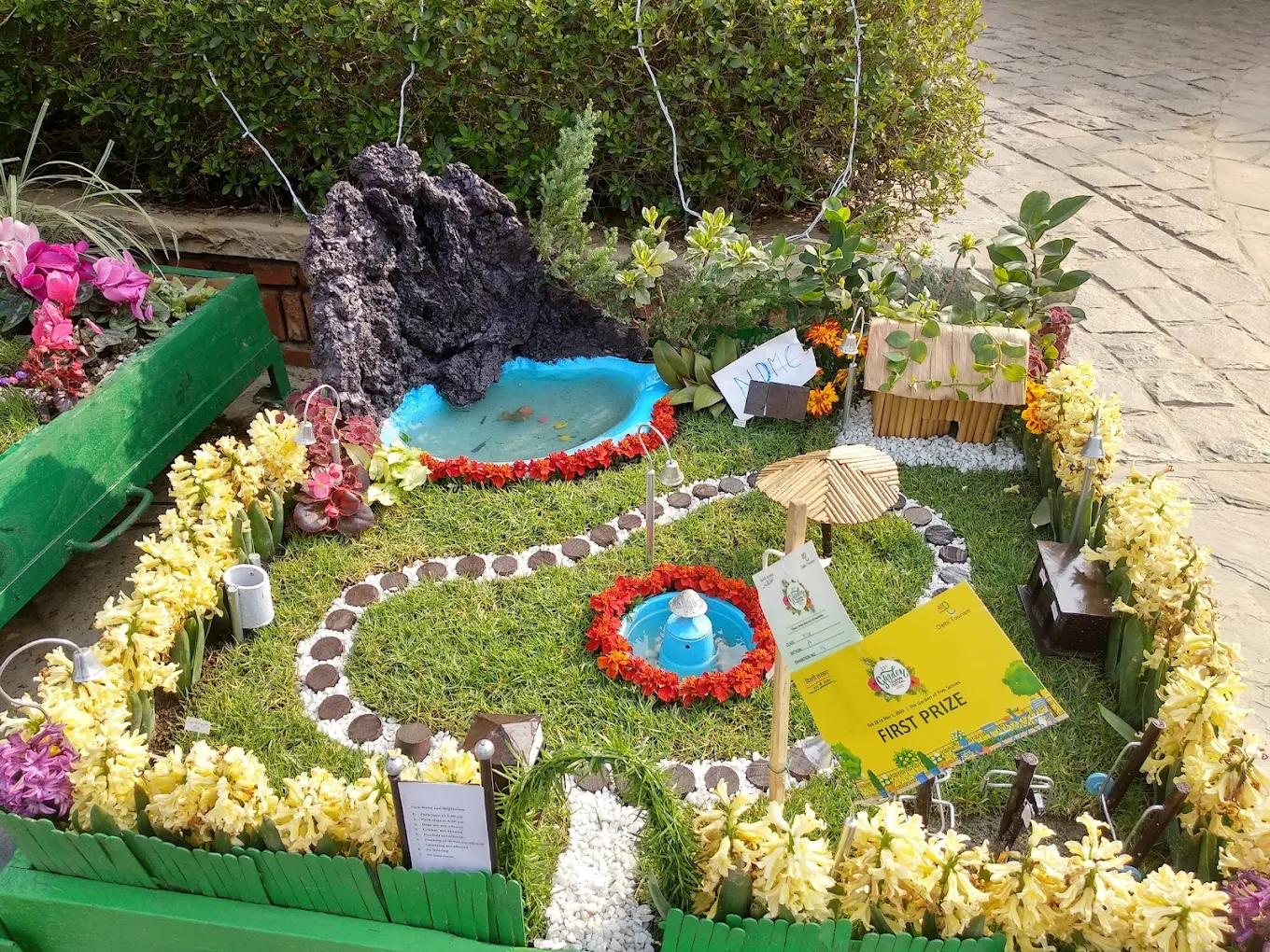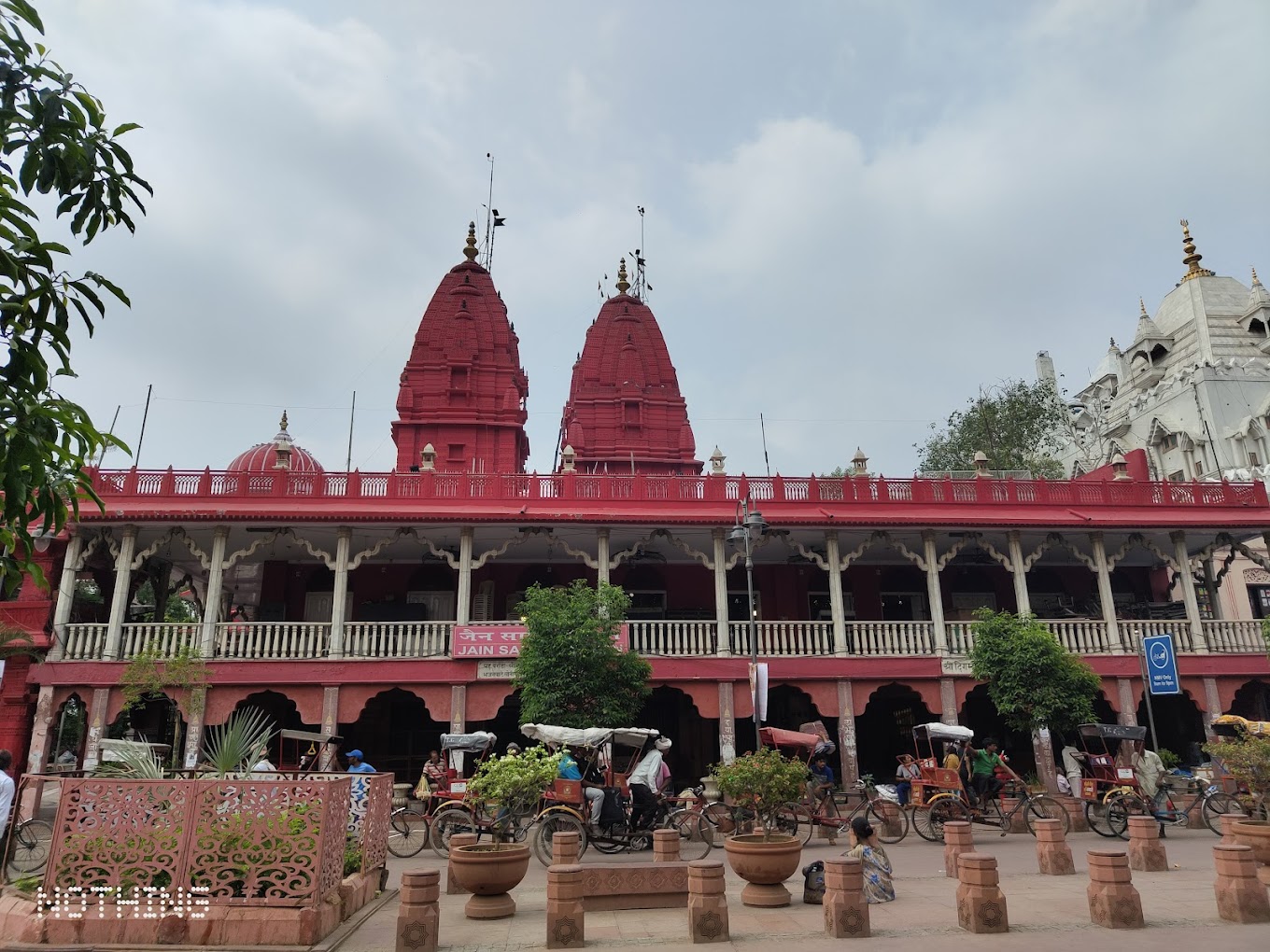
If you’re planning a visit to the heart of India, Delhi, and have a penchant for exploring the rich cultural and religious heritage, the Digambar Jain Temple should undoubtedly be on your list. This awe-inspiring temple is a testament to the architectural brilliance of the past and the spiritual devotion of the present. In this article, we’ll delve into the temple’s timings, history, entry fee, and the mesmerizing Aarti ceremony that takes place within its hallowed halls.
Delhi, the capital city of India, is a melting pot of diverse cultures and religions. Amidst its bustling streets and towering skyscrapers, you’ll find oases of spirituality and serenity, one of which is the Digambar Jain Temple.
Digambar Jain Temple Delhi Timing
History of Digambar Jain Temple Chandni Chowk, Delhi
The history of the Digambar Jain Temple in Delhi is a fascinating journey through time. Built in the 17th century, this majestic temple stands as a symbol of Jainism’s enduring presence in India.
The temple is dedicated to Lord Mahavira, the 24th Tirthankara of Jainism, and holds immense religious significance for Jain devotees. Its construction was a testament to the devotion and architectural brilliance of its time.
The architecture of the Digambar Jain Temple is a harmonious blend of Northern and Southern Indian styles, making it a unique masterpiece. The exterior of the temple is adorned with intricate carvings and detailed artwork that narrate the stories of Jainism.
Over the centuries, the temple has witnessed the ebb and flow of history, preserving the spiritual essence of Jainism amidst the ever-changing landscape of Delhi. It continues to stand as a beacon of faith, welcoming visitors from all corners of the world to experience its serenity and cultural richness.
The Digambar Jain Temple’s historical significance, coupled with its stunning architecture, makes it a must-visit destination for those seeking to explore the cultural heritage of Delhi and the profound spirituality of Jainism.
Images of Shri Digamber Jain Naya Mandir
Legend of Digambar Jain Temple Delhi
The legend of the Digambar Jain Temple in Delhi is steeped in the rich tapestry of Jainism’s history and spirituality. This sacred temple, dedicated to Lord Mahavira, the 24th Tirthankara, holds a special place in the hearts of Jain devotees and those curious about India’s diverse religious heritage.
According to legend, the temple was constructed in the 17th century, during a period when Jainism was flourishing in India. It is said that the inspiration for building this magnificent temple came from a divine vision or dream experienced by a devout Jain follower. In this vision, Lord Mahavira himself is believed to have appeared, guiding the devotee to erect a temple in his honor at this sacred spot in Delhi.
The construction of the temple was no small feat. Skilled artisans and craftsmen were summoned to create an architectural marvel that would not only house the divine idol of Lord Mahavira but also serve as a beacon of Jainism’s teachings and principles.
The temple’s name, “Digambar,” signifies the Jain monastic practice of renouncing worldly possessions, including clothing. Digambar monks traditionally believe in remaining naked as a symbol of their detachment from materialism. Thus, the temple is named in honor of this ascetic practice, further underscoring its deep-rooted connection to Jainism.
Over the centuries, the Digambar Jain Temple has withstood the tests of time and has continued to draw pilgrims, scholars, and tourists alike. Its legend lives on, not only through the stories of its divine origins but also through its remarkable architecture, spiritual significance, and the devout worship that takes place within its hallowed walls.
Today, the Digambar Jain Temple in Delhi stands as a testament to the enduring faith of Jain devotees and serves as a place of solace and enlightenment for all who seek to explore its legend and immerse themselves in the profound spirituality it embodies.
The architecture of Digambar Jain Temple Delhi
The architecture of the Digambar Jain Temple in Delhi is a captivating blend of artistic brilliance and spiritual symbolism. This majestic temple, built in the 17th century, showcases a unique architectural style that stands as a testament to the craftsmanship of its time.
The exterior of the temple is a visual masterpiece adorned with intricate carvings and detailed artwork. These exquisite carvings depict various scenes from Jain mythology and scriptures, narrating stories of spiritual significance. As you approach the temple, you’ll be greeted by the sight of these artistic wonders, each carving a testament to the devotion and dedication that went into the temple’s construction.
One notable feature of the temple’s architecture is its harmonious fusion of Northern and Southern Indian styles. This amalgamation creates a distinct visual appeal, making the Digambar Jain Temple a unique architectural gem in the heart of Delhi.
The temple’s grandeur is evident in its towering spires and ornate entrance. Its design draws inspiration from the principles of Jainism, emphasizing simplicity, symmetry, and spiritual symbolism. The intricate detailing on the temple’s façade is a reflection of the rich Jain heritage and the deep-rooted spiritual beliefs of its followers.
Inside the temple, you’ll find a serene and peaceful atmosphere, further enhancing the spiritual experience. The sanctum sanctorum houses the divine idol of Lord Mahavira, the central figure of Jainism. The architecture inside the temple continues to reflect the Jain ethos, with beautifully crafted pillars, arches, and artwork that inspire reverence and awe.
The Digambar Jain Temple’s architecture not only serves as a testament to the religious devotion of its builders but also as a bridge between the past and the present. It stands as a symbol of Jainism’s enduring presence in India and invites visitors to admire the artistic legacy of the past while connecting with the spiritual essence it embodies.
For anyone with an appreciation for art, culture, and spirituality, a visit to the Digambar Jain Temple in Delhi offers a profound experience that transcends time and leaves a lasting impression of architectural magnificence and spiritual significance.
Importance of the Digambar Jain Temple Delhi
The Digambar Jain Temple in Delhi holds immense importance, both in terms of religious significance and cultural heritage. This sacred place transcends its physical presence, symbolizing deep-rooted values and beliefs that resonate with the Jain community and visitors alike.
- Spiritual Sanctuary: At its core, the Digambar Jain Temple is a place of worship and spiritual solace. It serves as a sanctuary for Jain devotees who come to offer their prayers, seek inner peace, and connect with their faith. The temple’s tranquil ambiance and spiritual aura provide a refuge from the hustle and bustle of daily life.
- Religious Significance: The temple is dedicated to Lord Mahavira, the 24th Tirthankara of Jainism. For Jain followers, Lord Mahavira is a revered figure whose teachings and life serve as a guiding light. The temple allows devotees to pay homage to their spiritual leader and reaffirm their commitment to Jain principles.
- Cultural Heritage: Beyond its religious significance, the Digambar Jain Temple is a testament to India’s rich cultural heritage. Its architectural grandeur, intricate carvings, and blend of Northern and Southern Indian styles showcase the country’s artistic diversity. It stands as a living example of the architectural brilliance of its time.
- Tourist Attraction: The temple is not just a place of worship but also a popular tourist attraction. Visitors from across the globe are drawn to its stunning architecture, historical significance, and the opportunity to witness the Aarti ceremony. It offers a window into India’s pluralistic culture and the coexistence of various faiths.
- Interfaith Dialogue: In a city as diverse as Delhi, the Digambar Jain Temple serves as a symbol of interfaith harmony. It stands in proximity to other religious sites, fostering an environment of religious tolerance and dialogue. People from different backgrounds come here to learn about Jainism and engage in meaningful conversations.
- Educational Value: The temple serves as an educational resource, offering insights into Jainism’s philosophy, rituals, and history. It provides a platform for scholars and researchers to study Jain culture and its contributions to India’s religious mosaic.
- Architectural Marvel: The temple’s architectural beauty is awe-inspiring. It showcases the craftsmanship and attention to detail of its builders. Architects, artists, and history enthusiasts visit to appreciate the intricate carvings and unique architectural elements.
The Digambar Jain Temple in Delhi is not just a place of worship; it’s a multifaceted institution that encapsulates spirituality, culture, history, and interfaith dialogue. It continues to be a source of inspiration and enlightenment for those who seek to explore its significance and immerse themselves in its profound aura.
Things to do at Digambar Jain Temple Delhi
Visiting the Digambar Jain Temple in Delhi offers a range of meaningful and enriching experiences for both devotees and tourists. Here are some things to do when you visit this sacred and culturally significant site:
- Offer Prayers: Start your visit by offering your prayers and paying respects to Lord Mahavira, the 24th Tirthankara of Jainism. Devotees come from far and wide to seek blessings and spiritual solace.
- Admire the Architecture: Take some time to admire the breathtaking architecture of the temple. The intricate carvings, ornate spires, and unique blend of architectural styles make it a visual delight for architecture enthusiasts and photographers.
- Attend the Aarti: Don’t miss the opportunity to witness the Aarti ceremony. It’s a mesmerizing ritual that takes place twice a day, in the morning and evening. Join in or simply observe as lamps are lit, incense is offered, and devotional songs fill the air with spirituality.
- Learn About Jainism: The temple provides an excellent opportunity to learn about Jainism, its principles, and its history. You can engage with temple priests or guides who can share insights into Jain philosophy and practices.
- Photography: Capture the temple’s beauty and spiritual ambiance through photography. While photography is allowed, it’s courteous to ask for permission before taking pictures, especially of people.
- Enjoy the Peaceful Atmosphere: Take a moment to soak in the serene and peaceful atmosphere within the temple premises. It’s a tranquil oasis amidst the bustling city of Delhi, perfect for quiet contemplation.
- Dress Modestly: As a mark of respect for the temple’s sanctity, dress modestly when visiting. Cover your shoulders and knees, and remove your shoes before entering the inner sanctum.
- Observe Temple Etiquette: Maintain silence within the temple, and avoid loud conversations or disruptive behavior. Follow any specific rules or guidelines provided by the temple authorities.
- Explore the Surroundings: The Digambar Jain Temple is located in the historic area of Chandni Chowk, which is known for its bustling markets and street food. After your visit, take a stroll through the narrow lanes and savor the local cuisine and shopping opportunities.
- Engage in Interfaith Dialogue: If you’re interested in interfaith dialogue, strike up conversations with fellow visitors and temple-goers. Gain insights into the diverse religious fabric of India and foster mutual understanding.
Visiting the Digambar Jain Temple is not just a tourist experience; it’s a journey into spirituality, culture, and history. Whether you’re a devout Jain, a history buff, or a traveler seeking cultural immersion, this temple offers a multifaceted experience that leaves a lasting impression.
Interesting Facts about Digambar Jain Temple Delhi
The Digambar Jain Temple in Delhi is a place of rich history, spirituality, and cultural significance. Here are some interesting facts about this iconic temple:
- Ancient Origins: The temple’s history dates back to the 17th century, making it one of Delhi’s oldest Jain temples. Its enduring presence is a testament to Jainism’s deep-rooted history in India.
- Dedication to Lord Mahavira: The temple is dedicated to Lord Mahavira, the 24th Tirthankara of Jainism. It is a place of worship and reverence for Jain devotees who come to pay homage to this revered spiritual figure.
- Unique Architecture: The temple’s architectural style is a harmonious blend of Northern and Southern Indian architectural elements. This fusion results in a visually stunning and unique structure that stands out in the heart of Delhi.
- Intricate Carvings: The exterior of the temple is adorned with intricate carvings that depict scenes from Jain mythology and scriptures. These carvings are a testament to the craftsmanship and dedication of the artisans who built the temple.
- Aarti Ceremonies: The temple hosts Aarti ceremonies twice a day, in the morning and evening. These rituals are a mesmerizing spectacle of lamps, incense, and devotional songs that create a spiritually charged atmosphere.
- No Entry Fee: Unlike many other historical and religious sites, there is no entry fee to visit the Digambar Jain Temple. It is open to all, welcoming visitors from diverse backgrounds.
- Interfaith Harmony: The temple is located in the historic Chandni Chowk area, where multiple religious sites coexist. This reflects the ethos of interfaith harmony and tolerance that is a hallmark of India’s diverse culture.
- Educational Hub: Besides its religious significance, the temple serves as an educational resource for those interested in Jainism. Scholars and researchers often visit to study Jain culture, rituals, and history.
- Cultural Attraction: The temple is not just a place of worship but also a cultural attraction. Its architecture, spirituality, and historical value make it a must-visit destination for tourists exploring Delhi’s cultural heritage.
- Peaceful Oasis: Within the bustling city of Delhi, the temple provides a peaceful oasis. Visitors can escape the noise and chaos of the city and find serenity within its walls.
- Maintenance and Renovation: Over the years, the temple has undergone maintenance and renovation efforts to preserve its architectural beauty and spiritual sanctity.
- Accessibility: The temple is conveniently located in the heart of Delhi, making it easily accessible by various modes of transportation, including the Delhi Metro.
Visiting the Digambar Jain Temple not only offers a glimpse into Jainism but also allows you to immerse yourself in the historical and cultural tapestry of India’s capital city. It stands as a living testament to faith, artistry, and the enduring spirit of religious diversity.
Festivals at Digambar Jain Temple Delhi
The Digambar Jain Temple in Delhi is not only a place of regular worship but also a venue for various important Jain festivals and religious observances. These festivals are celebrated with great fervor and enthusiasm, drawing devotees and visitors alike to partake in the spiritual and cultural festivities.
Here are some of the notable festivals celebrated at the Digambar Jain Temple:
- Mahavir Jayanti: Mahavir Jayanti is one of the most significant Jain festivals celebrated at the Digambar Jain Temple. It marks the birth anniversary of Lord Mahavira, the 24th Tirthankara of Jainism. Devotees gather to offer special prayers, perform rituals, and participate in processions to honor Lord Mahavira’s teachings and life.
- Paryushana Parva: Paryushana Parva, also known as the “Festival of Forgiveness,” is a significant observance for Jains. It is a time of intense reflection, fasting, and seeking forgiveness from one another. During this period, special discourses on Jain principles are conducted at the temple, emphasizing self-purification and spiritual growth.
- Samvatsari Pratikramana: This is the culmination of the Paryushana Parva and is observed as the Day of Forgiveness. Devotees seek forgiveness for their sins and mistakes from all living beings. It’s a day of reflection, repentance, and renewal of vows.
- Diwali: Diwali, the Festival of Lights, is celebrated with enthusiasm at the Digambar Jain Temple. Devotees light lamps, offer prayers, and adorn the temple with intricate rangoli designs. It’s a time of joy and spiritual reflection.
- Akshaya Tritiya: Akshaya Tritiya is an auspicious day for Jains, and it is celebrated at the temple with devotion. It is believed that any good deeds performed on this day will bring boundless blessings and prosperity.
- Samanijis’ Arrival: Whenever Samanijis (Jain nuns) visit the temple, it becomes a special occasion. Devotees gather to receive their blessings and listen to their spiritual discourses. The presence of Samanijis adds to the temple’s spiritual vibrancy.
- Anniversary Celebrations: The Digambar Jain Temple may celebrate its own anniversary or significant milestones with special events and gatherings. These occasions are marked with prayers, cultural programs, and community activities.
- Other Religious Observances: Throughout the year, the temple observes various religious rituals, including Pujas, Abhisheks (ritualistic bathing of deities), and scripture readings. These activities keep the temple’s spiritual life vibrant and engaging.
Visiting the Digambar Jain Temple during these festivals offers a unique opportunity to witness the vibrant Jain culture and spirituality. Whether you are a devout Jain or a curious visitor, these festivals provide a glimpse into the rich traditions and devotion that thrive within the temple’s sacred precincts.
Places to visit near Digambar Jain Temple Delhi
The Digambar Jain Temple in Delhi is situated in the historic Chandni Chowk area, which is not only home to several other significant religious sites but also offers a wealth of cultural and historical attractions.
Here are some notable places to visit near the Digambar Jain Temple:
Red Fort (Lal Qila):
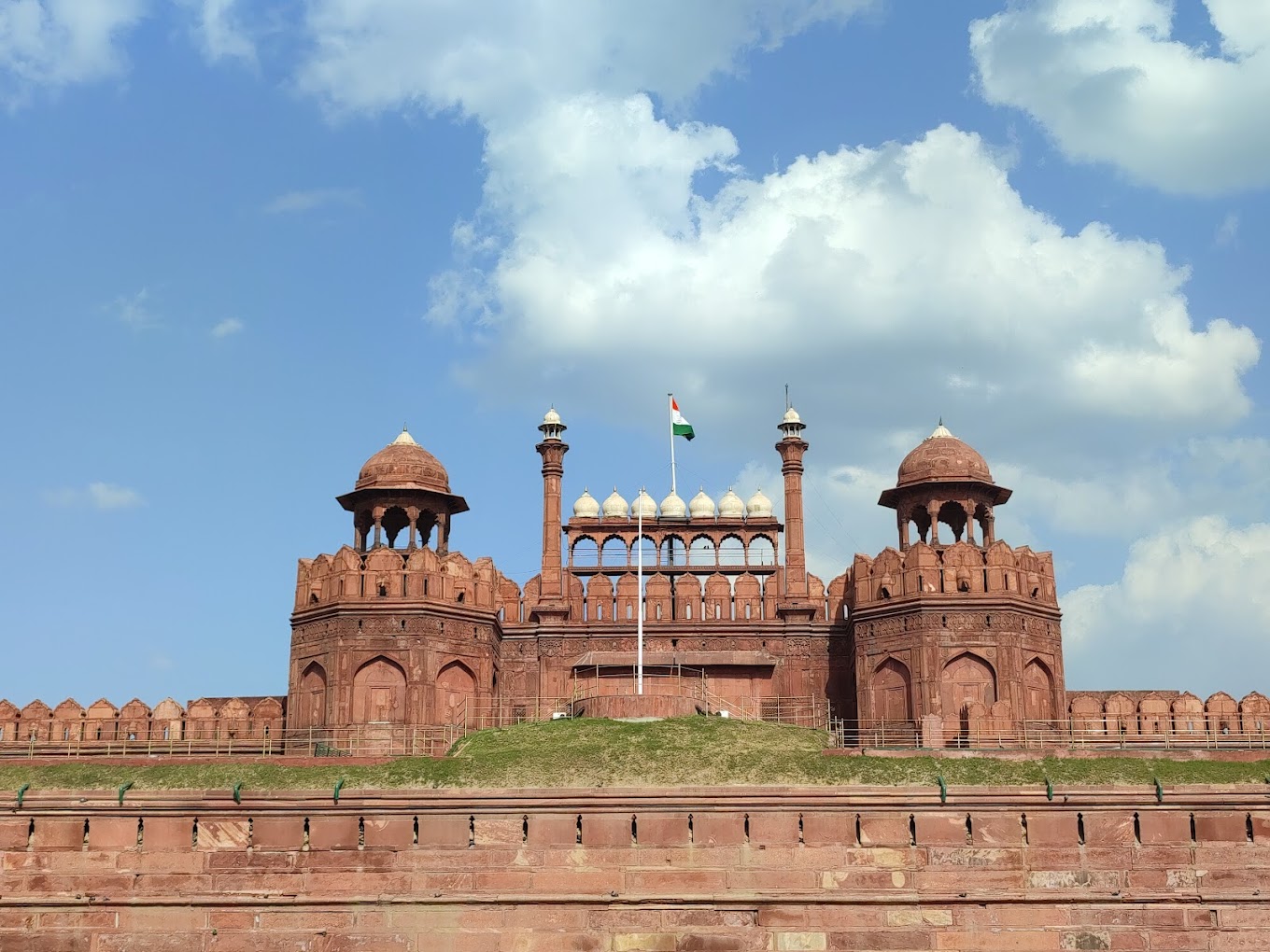
This UNESCO World Heritage Site is a short walk from the Digambar Jain Temple. The Red Fort is an iconic symbol of India’s rich history and serves as a reminder of the country’s colonial past.
Jama Masjid:
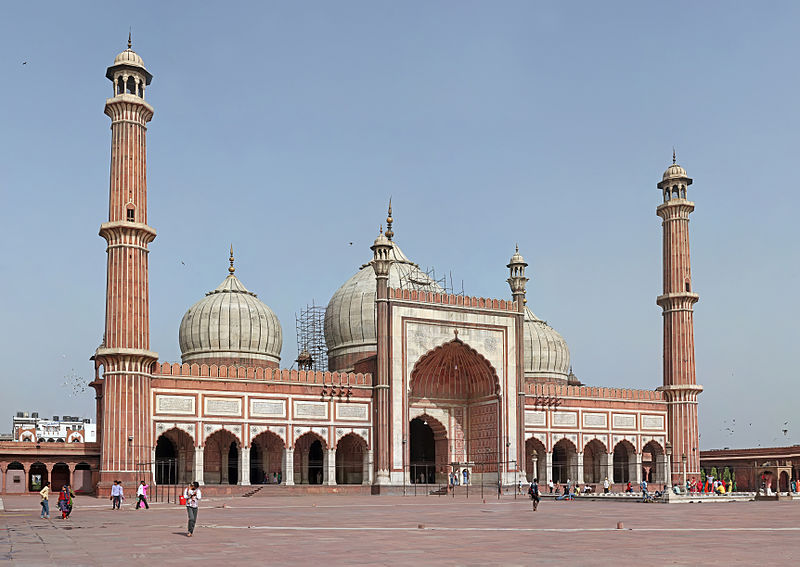
Located near the Red Fort, the Jama Masjid is one of the largest mosques in India. Its stunning architecture and panoramic views from its minarets make it a must-visit.
Chandni Chowk:

The bustling Chandni Chowk market is famous for its vibrant bazaars, street food, and shopping. Explore the narrow lanes, shop for traditional Indian goods, and savor the local cuisine.
Shri Digambar Jain Lal Mandir:
Adjacent to the Digambar Jain Temple, you’ll find the Shri Digambar Jain Lal Mandir, a prominent Jain temple known for its bird hospital.
Gurudwara Sis Ganj Sahib:
This Sikh temple is known for its historical significance as the place where Guru Tegh Bahadur, the ninth Sikh Guru, was martyred.
Raj Ghat:

Pay your respects to Mahatma Gandhi at his memorial, Raj Ghat, where he was cremated. The serene garden and the simple black marble platform make it a solemn yet peaceful place to visit.
Chhota Bazaar:
This market, located in the heart of Chandni Chowk, is famous for its traditional Indian sweets and snacks. It’s a great place to sample local delicacies.
Fatehpuri Masjid:
Another beautiful mosque in the vicinity, Fatehpuri Masjid, is known for its distinctive red sandstone architecture and serene courtyard.
Sis Ganj Gurudwara:
This historic Gurudwara is dedicated to Guru Tegh Bahadur and is an important religious site for Sikhs. It’s known for its tranquil ambiance and spiritual significance.
Delhi Gate:
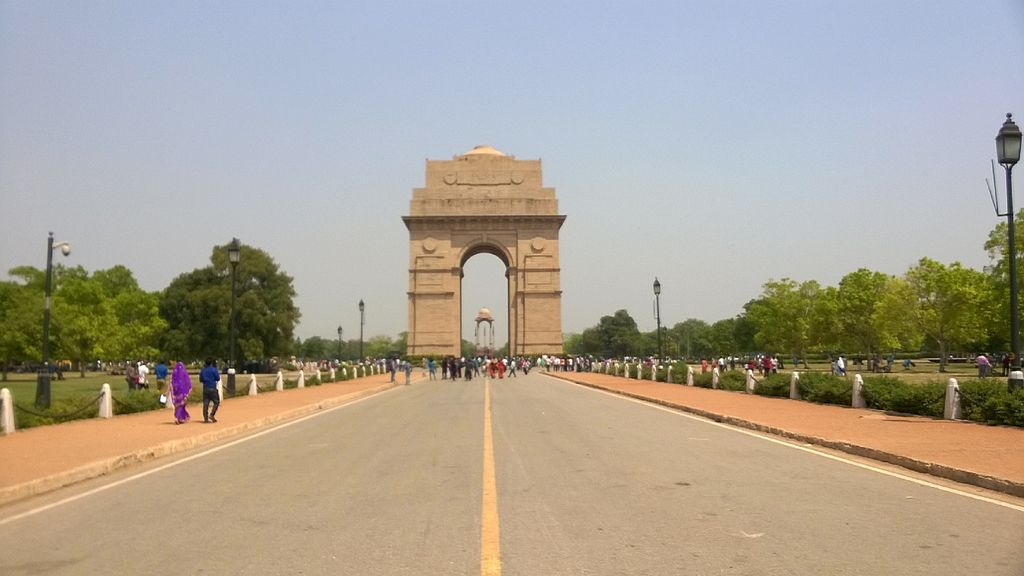
Located at the end of Chandni Chowk, the Delhi Gate is one of the historic gates that once marked the entry into the walled city of Delhi. It’s a great spot for history enthusiasts.
Khari Baoli:
Known as Asia’s largest spice market, Khari Baoli is a sensory delight with shops selling a vast array of spices, herbs, and dry fruits.
Kinari Bazaar:
This bustling market is famous for its wedding-related goods, including intricate textiles, jewelry, and accessories.
Sunehri Masjid:
Also known as the “Golden Mosque,” this historic mosque is an architectural gem known for its stunning golden exterior.
Visiting these nearby attractions around the Digambar Jain Temple will not only offer you a diverse cultural and historical experience but also provide insight into the rich tapestry of Delhi’s heritage.
Places to eat near Digambar Jain Temple Delhi
The area around Digambar Jain Temple in Delhi, particularly Chandni Chowk, is renowned for its culinary delights. Here are some places to eat near the temple where you can savor delicious Indian cuisine:
Paranthe Wali Gali:
This iconic lane in Chandni Chowk is famous for its parathas. You can choose from an array of stuffed parathas, both sweet and savory, served with a variety of chutneys and pickles.
Karim’s:
Just a short walk from the temple, Karim’s is renowned for its Mughlai cuisine. Their kebabs, biryanis, and Nihari (slow-cooked beef stew) are legendary.
Kuremal Mohan Lal Kulfi Wale:
Beat the heat with some authentic Indian kulfi (a frozen dairy dessert). This shop offers a wide range of flavors, including traditional and innovative options.
Gali Paranthe Wali:
In addition to Paranthe Wali Gali, this street is lined with eateries offering delicious North Indian street food, including chaat and jalebi.
Shree Balaji Chaat Bhandar:
Try a variety of chaats (spicy snacks) at this popular street food stall. Their aloo tikki chaat and golgappas (pani puri) are highly recommended.
Aslam Chicken:
If you’re a fan of non-vegetarian delights, Aslam Chicken is known for its delectable chicken dishes, including butter chicken and kebabs.
Natraj Dahi Bhalle Wala:
Enjoy the cool and refreshing dahi bhalla (fried lentil dumplings soaked in yogurt) and aloo tikki served at this iconic eatery.
Old Famous Jalebi Wala:
Satisfy your sweet tooth with crispy and syrupy jalebis from this famous sweet shop. Pair them with rabri (sweet condensed milk) for an extra treat.
Shree Makhan:
This vegetarian restaurant offers a range of North Indian dishes, including mouthwatering paneer-based specialties.
Giani’s Di Hatti:
Craving some ice cream? Giani’s is known for its delectable ice cream flavors and falooda (a cold dessert).
Haji Tea Point:
For a refreshing cup of masala chai (spiced tea) and some traditional Indian snacks, Haji Tea Point is a popular choice.
Bikanervala:
If you prefer a sit-down meal, Bikanervala offers a variety of North Indian and Rajasthani dishes, including thalis and sweets.
Kuremal Mohan Lal Kulfi Wale:
Beat the heat with some authentic Indian kulfi (a frozen dairy dessert). This shop offers a wide range of flavors, including traditional and innovative options.
These dining options near Digambar Jain Temple showcase the rich culinary heritage of Delhi and offer a delightful experience for food enthusiasts. Whether you’re in the mood for street food, traditional Indian sweets, or a hearty meal, you’ll find something to satisfy your taste buds in this vibrant area.
Stay Near Digambar Jain Temple Delhi
Finding accommodation near Digambar Jain Temple in Delhi is convenient, as the area offers a range of options to suit different preferences and budgets. Here are some places to consider for your stay:
- Hotel Tara Palace: This budget-friendly hotel is located in the heart of Chandni Chowk, just a short walk from the Digambar Jain Temple. It offers comfortable rooms and easy access to the bustling streets of Old Delhi.
- Haveli Dharampura: For a unique and boutique experience, consider staying at Haveli Dharampura, a restored heritage property in the vicinity. It offers well-appointed rooms with a traditional touch and a rooftop restaurant with stunning views of the city.
- Hotel Broadway: Located a bit farther from the temple but still within reach, Hotel Broadway is a mid-range option offering comfortable rooms and a charming ambience. It’s known for its in-house restaurant, Chor Bizarre, serving Indian cuisine.
- Hotel Le Roi: Situated near the New Delhi Railway Station, Hotel Le Roi offers modern amenities and comfortable rooms. It’s a short drive from the Digambar Jain Temple and provides easy access to major transportation hubs.
- The Lalit: If you’re looking for a luxurious stay, The Lalit is a 5-star hotel with elegant rooms, multiple dining options, a spa, and a rooftop pool. It’s located in Connaught Place, which is a short drive from Chandni Chowk.
- Hotel Godwin Deluxe: This budget-friendly hotel is situated in the Paharganj area, offering clean and comfortable rooms. It’s a good option for travelers on a tight budget.
- Hotel Tara Palace in Daryaganj: Another branch of Hotel Tara Palace, this one is located in Daryaganj, offering easy access to historical sites and markets in Old Delhi.
- The Imperial: For a truly luxurious experience, The Imperial is a historic 5-star hotel in Connaught Place, known for its colonial architecture, fine dining, and impeccable service.
- Hotel Al Gulzar: Located in the Chandni Chowk area, this budget-friendly hotel offers basic amenities and a convenient location for exploring the historic part of Delhi.
- Hotel Florence: Situated in the Karol Bagh area, Hotel Florence provides comfortable rooms and is a short drive from the Digambar Jain Temple.
When booking your stay, consider your budget, preferences, and proximity to the Digambar Jain Temple. Keep in mind that accommodations in Delhi can vary widely in terms of price and amenities, so it’s advisable to book in advance, especially during peak tourist seasons.
Best Time To Visit Digambar Jain Temple Delhi
The best time to visit the Digambar Jain Temple in Delhi is during the cooler months of October to March.
Here’s why:
- Pleasant Weather: Delhi experiences extreme weather conditions, with scorching summers and chilly winters. Visiting during the cooler months ensures a more comfortable and enjoyable experience, as you won’t have to contend with the sweltering heat.
- Festive Season: Many of the Jain festivals and special observances, such as Mahavir Jayanti and Paryushana Parva, fall during this period. Visiting during these festivals allows you to witness the temple’s vibrant celebrations and immerse yourself in Jain culture.
- Clear Skies: The winter months typically have clearer skies and better air quality compared to the smoggy conditions of late autumn and winter in Delhi. This means better visibility and more pleasant outdoor experiences.
- Ideal for Sightseeing: Delhi has numerous historical and cultural attractions, and the pleasant weather of the winter months is perfect for exploring these sites. You can conveniently visit nearby landmarks such as the Red Fort, Jama Masjid, and Chandni Chowk.
- Photography: If you enjoy photography, the soft winter light and clear skies offer excellent conditions for capturing the temple’s intricate architecture and the vibrant street scenes around it.
- Avoiding Monsoons: Visiting during the monsoon season (July to September) may not be ideal due to heavy rains, which can disrupt outdoor plans and make it challenging to navigate the city’s crowded streets.
- Crowd Management: Delhi tends to be less crowded with tourists during the winter months compared to the peak summer season. This means shorter queues and a more relaxed atmosphere at the temple and other attractions.
- Comfortable Attire: In the cooler months, you can dress comfortably without worrying about the extreme temperatures. However, do carry a light jacket or shawl, as evenings can be chilly.
Keep in mind that while the winter months are generally the best time to visit, it’s also a popular tourist season, so it’s advisable to plan your trip in advance and book accommodations accordingly. Regardless of the time of year, the Digambar Jain Temple in Delhi offers a spiritually enriching experience and a glimpse into India’s diverse cultural heritage.
How To Reach Digambar Jain Temple Delhi
Reaching the Digambar Jain Temple in Delhi is relatively straightforward, as it is located in the bustling area of Chandni Chowk, which is well-connected by various modes of transportation.
Here’s how to reach the temple:
By Metro:
- Delhi Metro: The Delhi Metro is one of the most convenient ways to reach the Digambar Jain Temple. You can take the Yellow Line of the Delhi Metro and alight at the “Chawri Bazar” metro station, which is the nearest station to the temple. From there, it’s a short walk to the temple.
By Bus:
- Delhi Transport Corporation (DTC) Buses: Delhi has an extensive bus network operated by the Delhi Transport Corporation (DTC). You can check for DTC buses that have routes passing through Chandni Chowk or Chawri Bazar. The temple is within walking distance from these bus stops.
By Auto-Rickshaw or Taxi:
- Auto-Rickshaw: Auto-rickshaws are readily available in Delhi and can take you to the Digambar Jain Temple. Make sure to negotiate the fare before starting your ride, or you can ask the driver to go by the meter.
- Taxi: You can also hire a taxi to reach the temple. Taxis are more comfortable than auto-rickshaws and provide a more private mode of transportation. Ensure the meter is running or negotiate a fare with the driver.
By Car:
- Personal Vehicle: If you have access to a personal vehicle or are renting one, you can use GPS navigation to reach the Digambar Jain Temple. However, keep in mind that parking in the Chandni Chowk area can be challenging due to congestion.
By Cycle-Rickshaw:
- Cycle-Rickshaw: For a unique experience, you can take a cycle-rickshaw ride through the narrow lanes of Chandni Chowk. These rickshaws are a slower but eco-friendly mode of transportation and can navigate through the crowded streets.
By Walking:
- On Foot: If you’re staying in the nearby area or enjoy walking, you can reach the temple by taking a leisurely stroll through the vibrant streets of Chandni Chowk. The Digambar Jain Temple is centrally located and easily accessible on foot.
Note: Chandni Chowk is a bustling and crowded area, so be prepared for heavy pedestrian and vehicular traffic. It’s advisable to keep your belongings secure and be cautious when crossing the streets.
Reaching the Digambar Jain Temple in Delhi is part of the cultural experience, as you can soak in the sights and sounds of Old Delhi as you make your way to this historic and spiritually significant destination.


